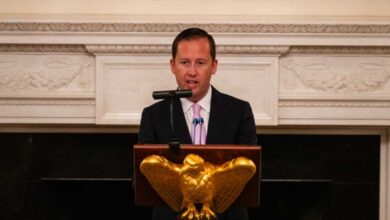
Oil prices rose yesterday, with OPEC expecting relatively strong growth in global demand for oil over the next two years and the disruption of some oil production operations in the United States due to cold weather.
Futures prices for standard Brent crude for March delivery rose by 0.39 percent to $78.18 per barrel during morning trading yesterday, while futures prices for US Nymex crude for February delivery increased by 0.72 percent to $73.08 per barrel.
Bloomberg reported that the new US strikes on Houthi sites in Yemen prompted a rise in oil prices in an indication of increasing threats in the Red Sea.
The state of North Dakota, one of the largest US oil-producing states, noted that temperatures that fell below zero caused oil production there to decline by between 650,000 to 700,000 barrels per day, that is, less than half of the usual production.
On the other hand, the International Energy Agency once again raised its expectations for the growth of global oil demand in 2022, but its expectations are still much lower than its OPEC counterpart.
The Paris-based agency predicted, in its third consecutive monthly increase, that global oil consumption would rise by 1.23 million barrels per day in 2024, compared to OPEC’s expectation of an increase of 2.25 million barrels.
The latest amendment came to raise the growth forecast from the International Energy Agency, which represents an increase of 180 thousand barrels over the previous forecast, based on the improvement in global economic growth and the decline in crude prices in the fourth quarter of 2023, in addition to China’s expansion in the petrochemical sector.
The agency reported in its January report that “the consensus on the economic future has improved somewhat over the past few months following the recent shift in central bank policies,” indicating that “the decline in oil prices in the fourth quarter of 2023 represents an additional driving factor.”
It stated that the expected decline by half in the annual demand growth rate in 2024 came as a result of the incomplete recovery after the pandemic, the modest growth of major economies, improved energy efficiency, and the significant increase in the number of electric cars.
The escalating geopolitical tension in the Middle East region has confused the markets, while the agency confirms that the region passes through a third of the world’s seaborne oil trade, noting that, with the exception of the major disruption of oil flows from that region due to current events, “it appears that good supplies will reach the market in 2024” until Although OPEC and the OPEC+ bloc have implemented a series of production cuts since late 2022 to support the market.
The agency expected that these cuts might make the markets tend to feel a limited supply deficit at the beginning of the year, but strong growth from producers outside OPEC+, including the United States, Brazil, and Guyana, could lead to a large surplus if the voluntary cuts were abandoned in the second quarter of the year.













